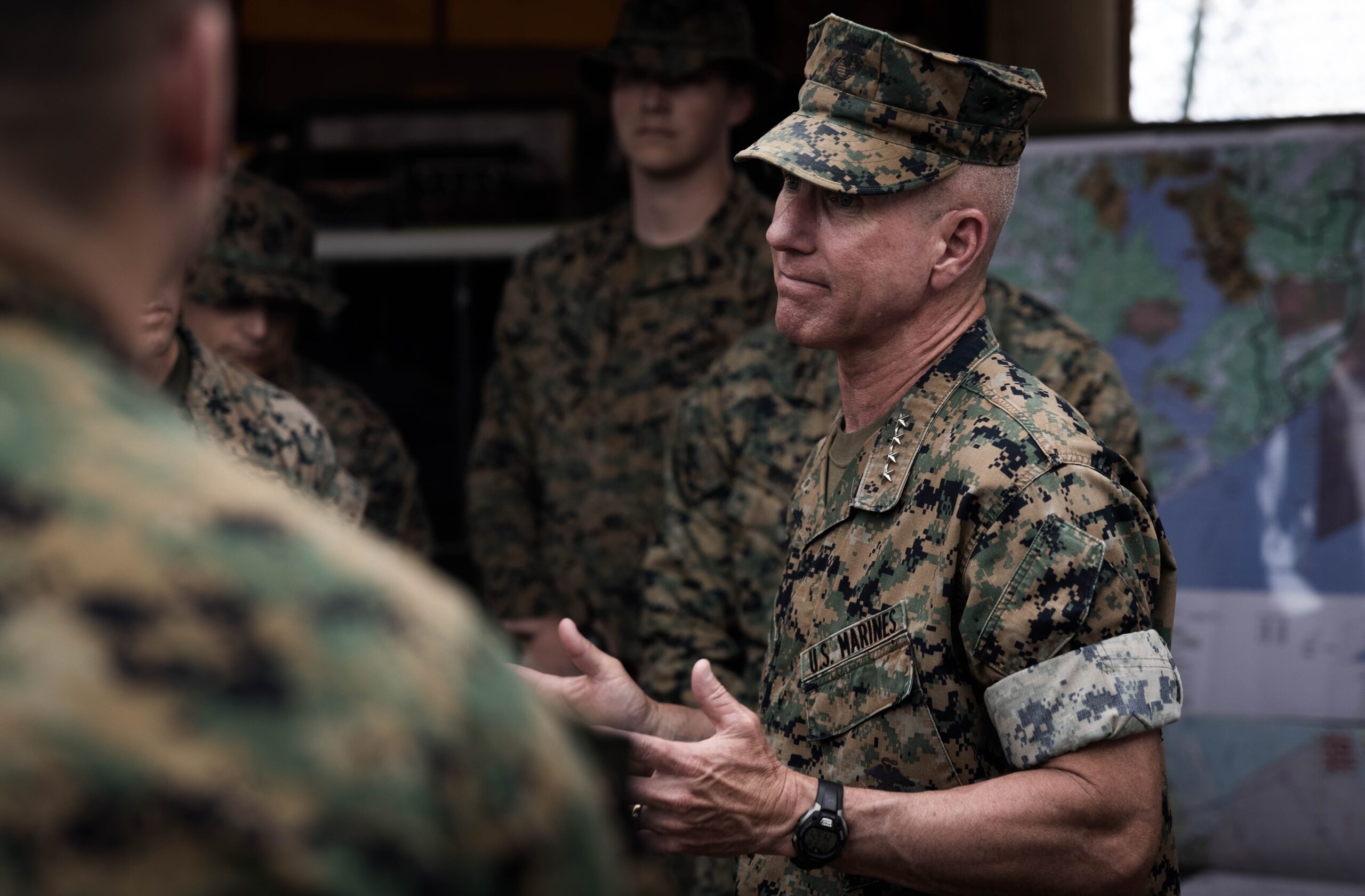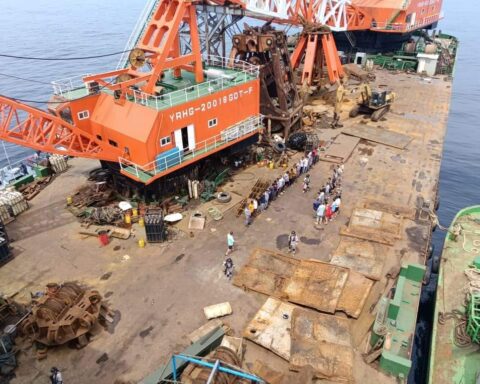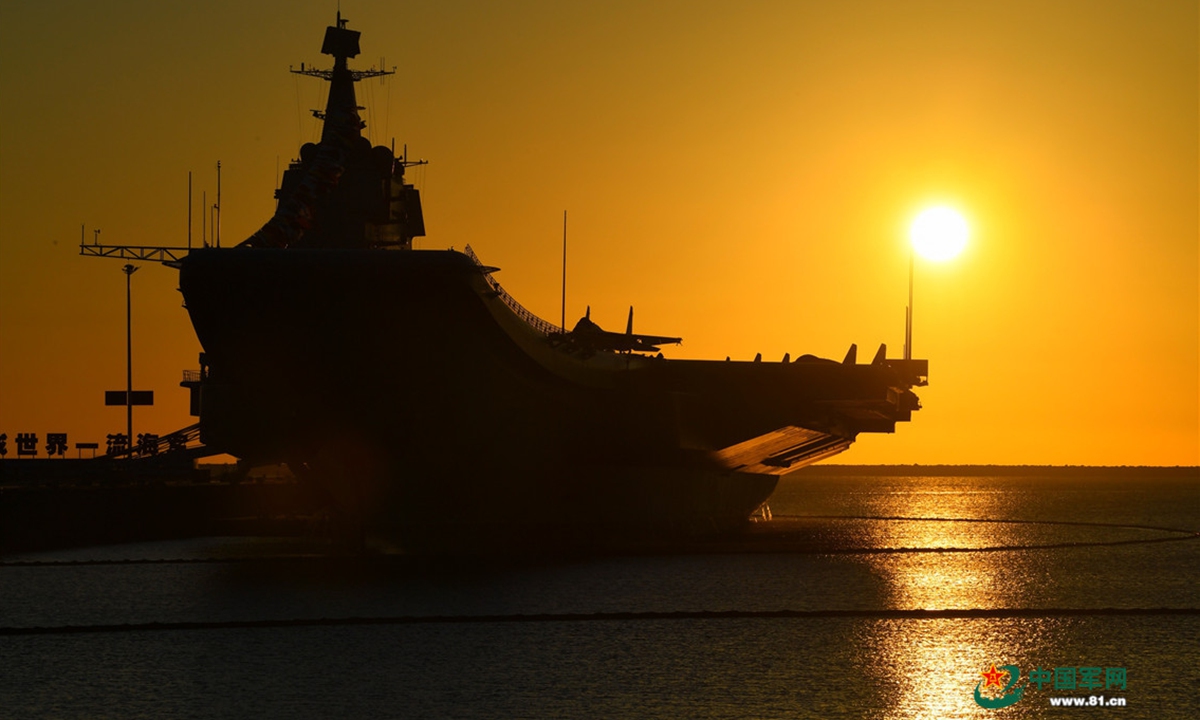
A key Marine Corps role is to “serve as the inside force” in the first island chain – from the Ryukyus to Australia – to curb China’s ambitions, Commandant of the Marine Corps Gen. Eric Smith said Tuesday, adding that no service can deter of defeat Beijing alone.
“The Chinese were outsticking us [the United States]” with long-range anti-ship missiles and other weapons systems in their anti-access/area denial steps taken to modernize and expand their forces in the last two decades, Smith said, speaking at a Brookings Institute event.
“Now we’re mixing it up.”
The idea behind the Marine Corps Force Design innovations, started under his predecessor Gen. David Berger, is the ability to influence China’s behavior by “shutting down the sea lines of communication” from dispersed forces and precision strike, Smith said. He named long-range rocket systems going out tens of kilometers “and they’re guided” being better able to do than conventional artillery.
“Range matters,” Smith said.
That was one lesson the Marine Corps has taken from the fighting in Ukraine.
“You have to be able to sense at range … and share the data,” he said.
Sensing and sharing battlefield data shows the value of the Pentagon’s Joint All-Domain Command and Control [JADC2] effort undertaken by all the services. “You don’t want to fight alone” as the Marine had to do at Guadalcanal, Smith said.
“It’s an away game [for the United States in any conflict in the Indo-Pacific]. We have to get lighter and more mobile,” Smith said.
He added a dispersed force can thwart an enemy’s planning and operations. The littoral combat regiment also is capable of attacking and destroying a naval base.
“We still have MEFs [Marine Expeditionary Forces], aviation” to back those regiments up. He added with the dispersed three littoral combat regiments in the Indo-Pacific, “we’re still big enough to demonstrate a knock-out punch” especially when combined with submarines, Army multi-domain units and anti-ship missiles.
Logistics for these widely spread out units is a challenge in theater and globally.
“Really, we just need to produce the Landing Ship Medium” to re-supply dispersed Marines in a theater of conflict, Smith said. Surrogate vessels in the interim won’t meet the requirement that different islands pose to operations. Earlier, he said the exact number of LSMs needed in the Indo-Pacific has yet to be determined.
Logistics in contested environments for the services is a top priority in Transportation Command’s warfighting plans for ships and aircraft, he added.
Of particular concern to Smith was China’s aggressive building of artificial islands on coral reefs and volcanic mounts, then claiming them as its territory. Those moves extend Beijing’s claims of its Exclusive Economic Zone further and further out from the Asian mainland.
“Pretty soon, you have an EEZ that encompasses the South China Sea,” he said.
Building an artificial island “doesn’t mean it belongs to China.”
With its attention on the Indo-Pacific, “the Marine Corps is an amphibious force” with its own fleet size requirements. Smith said he and Adm. Lisa Franchetti, chief of naval operations, agree on 10 “big decks” and 21 LPDs [Landing Platform Docks].
Over the years “the insatiable demands” of the regional combatant commanders for amphibious forces has had an impact on deferring maintenance to amphibious ships fleet and cutting short ships’ crews and Marines in the expeditionary units recovery time with family and re-training for new deployment and promotion.
Instead of the preferred rotation cycle of six months at sea and 18 months back home, the commands “tend to ask for it and extend it” once the amphibious force enters their area of responsibility, Smith said.
Uncrewed systems hold promise to sensing, range and time on mission but somewhere there has to be a human involved, though not necessarily in every action. The example he used was close-in defense systems for ships “to engage anything if it is within a certain distance.”
If they were undersea systems, they also would require periodic maintenance and defensive measures to continue their missions, Smith said.
In a round-down on Marine aviation, Smith called the MV-22 Osprey “completely safe.” He added, “every airframe can have a malfunction. …No aircraft is immune from mechanical problems or pilot error.” The Pentagon grounded all V-22s for three months in late 2023 “for a materiel failure” that followed the crash of an Air Force V-22 off the Japanese coast. Eight airmen died in the crash.
Like shipbuilding, munition production “needs a steady, stable demand signal” from the Department of Defense, the services and industry itself. He called this “Job One” and warned against drawing on the nation’s war reserves to meet today’s demand.





